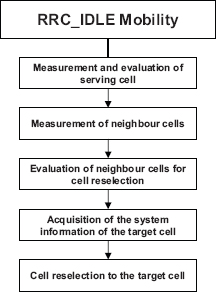Chapter 22
Radio Resource Management
22.1 Introduction
Radio Resource Management (RRM) encompasses a wide range of techniques and procedures, including power control, scheduling, cell search, cell reselection, handover, radio link or connection monitoring, and connection establishment and re-establishment. Advanced features like interference management, location services, Self-Optimizing Networks1 (SON) and some network planning methods make use of RRM-related techniques based on radio related measurements made by the User Equipment (UE) or eNodeB. In this chapter, we address the RRM techniques and reporting mechanisms that support UE mobility in the LTE network (E-UTRAN), including cell search, radio measurements, cell reselection, handover and radio link monitoring. We focus here on the performance requirement aspects, while the procedures themselves are described in Chapters 3, 4, 7, 12, 17 and 18.
The RRM-related actions undertaken by the UE can be broadly divided into those relevant in the RRC_IDLE state and those relevant in the RRC_CONNECTED state, as illustrated in Figures 22.1 and 22.2 respectively.
RRM in E-UTRAN is designed to handle the challenges posed by the fundamental characteristics of the LTE system, including:
Figure 22.1: UE actions related to RRM Procedures in RRC_IDLE state.

Figure 22.2: UE actions related to RRM Procedures in RRC_CONNECTED ...

